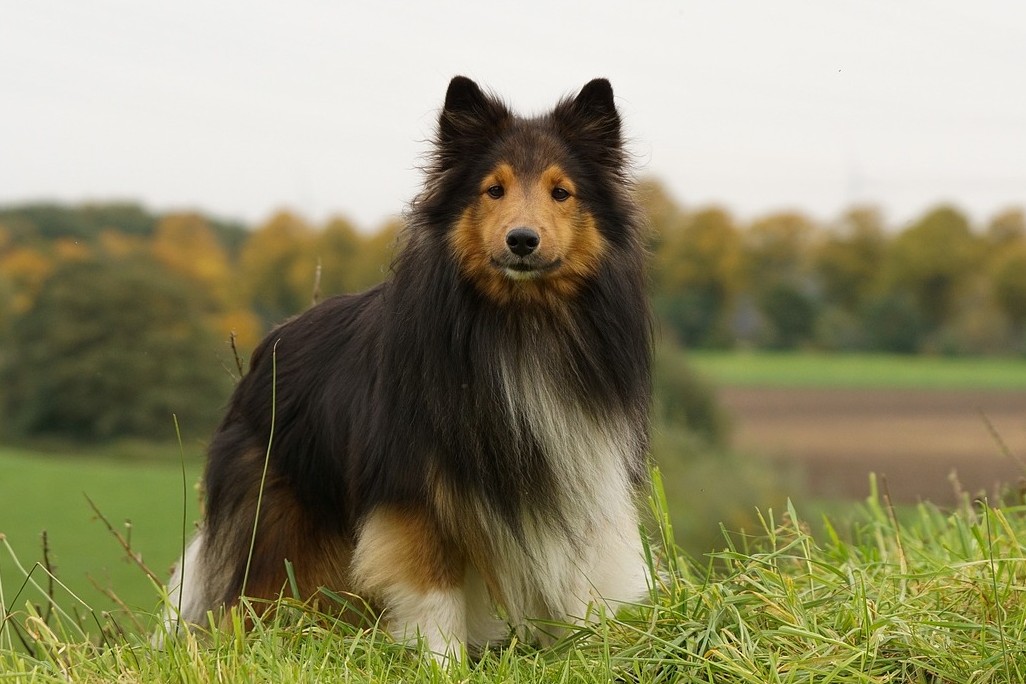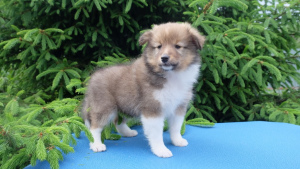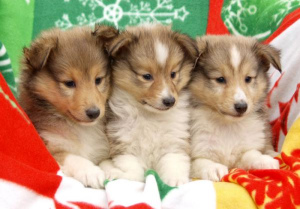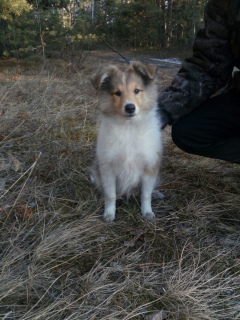Shetland Sheepdog
The breed of dogs Sheltie is very faithful to its owner, quite independent, playful, active, delicate. It is the perfect combination of beautiful appearance and noble character that causes many people around the world to decide to bring Sheltie.
- Origin United Kingdom, Growth 30 - 60 сm., Weight 6 - 10 kg.
- Lifespan 10-15 years
Popularity
Wool length
Size
Health
Mind and wit
Name of the breed: Shetland Sheepdog
Fit for allergics: No
For families with children: Yes
Difficulty of care: No
Dog guard: No
Guide-dog: No
Ability to train: Yes
 Curious facts
Curious facts
- Sheltie - real aristocrats. This fact confirms that they adore to gracefully cross their paws while resting, and also try to always keep themselves and their wool in a clean, tidy state.
- These dogs are excellent guards. In this regard, the owners should be vigilant while walking - Sheltie can easily chase some animal.

- The average life expectancy is 12-14 years.
- Psychologist Stanley Coren (Stanley Coren) from Canada (Canada) conducted a study of Sheltie's intelligence and placed her in 6th position in his level of 130.
- The fact of the talkativeness of many pets is striking, but for the owners it is very convenient: they can literally understand what their dog says.
Sheltie is a miniature "little fox" hailing from the Shetland Islands. This breed is very often compared to Collie, but despite the fact that their similarity is really obvious, they are nevertheless two separate breeds. By their origin, these four-legged are excellent shepherds and guards.
 Breed origin
Breed origin
The name itself indicates where the origin of the breed originates from. This is the Shetland Islands. It was there that little “foxes” appeared that coped perfectly with the task of managing small flocks of sheep. The exact date of the birth of the breed, unfortunately, is unknown.
With the passage of time, the herds became more and more, and the miniature Sheltie could no longer cope with her duties. This was the reason for the almost complete disappearance of the breed. The situation improved when, at the beginning of the 20th century, a group of connoisseurs of these dogs, but exclusively as a domestic one, undertook to restore the breed, to popularize it.
The species got its name only in 1914 after the creation of the first English Sheltie Club. Recent changes to the standard description were adopted in 1948.
_120x127.jpg) Character traits
Character traits
Sheltie is a squat dog. Her torso is strong, elongated, rather dry. The chest is deep, wide, tapers closer to the bottom. The back is athletic and straight. The neck is distinct, long. Limbs straight, strong enough, with round paws. The tail is very curvaceous, of medium length, usually omitted.
- Height: 35-39cm.
- Weight: 6-12 kg.
The head of these dogs is characterized by the absence of a clear boundary between the skull and the muzzle. The shape is elongated. The ears are triangular in shape and slightly curved at the ends. The eyes are slightly angled, almond-shaped, dark, but blue is also permitted. The nose is straight, long, black. The lips are thin.
Wool is a key element of the whole image of Sheltie. She looks very elegant and rich. Ostev hair very thick, straight. But the undercoat is soft. Only 4 types of color fall under the description of the standard:
- Black with white
- Red and White
- The combination of three colors: black and shades of sable
- Marble (blue + white)
_120x106.png) How to care, feed, educate?
How to care, feed, educate?
How to care?
Shelties are quadrupeds that can adapt to any condition of life. They can lead a more active lifestyle, as well as a more passive one, live in a large country house or in a city apartment. They are surprisingly sensitive to the emotional state of their master, and therefore they can always adjust to him: just lie down beside him and calm him down or join in an active fun game.
The complexity of the care can be assessed as average. It is recommended to bathe them as necessary, but it is better to comb them more often: because of the thick long hair there is a tendency to form numerous tangles. Care for the eyes should be daily, for the ears - at least 1-2 times in 2-3 weeks, the teeth need to be cleaned. These dogs have a tendency to dermatitis, so you need to carefully monitor the condition of the pet's skin.
How to feed?
An important plus in favor of Sheltie is that they are not prone to food allergies. However, there are nevertheless a number of rules that should be followed to build a balanced diet.
First, the food must be natural, healthy and moderate. It is not necessary to overfeed pets, even if they very much ask you about it - this can lead to big health problems.
Secondly, all products, from feed to natural, should be of the highest quality. Prefer only to trusted manufacturers.
Preservatives, semi-finished products, tubular bones, potatoes, pasta, sweets, and spices are prohibited in the diet. It is better to include fresh meat, eggs, cereals, vegetables and fruits.
How to raise?
Many owners say that the Shelties themselves choose their master. As a rule, it is only one person. Here it is, these four-legged and ready to listen. To other people, even relatives or simply strangers, they do not agree to obey.
This breed is characterized by outstanding intelligence and ingenuity, ease of learning. Training of course you need to start immediately after the appearance of a puppy in your home. Experts agree that the best learning method is playing along with rewards. Shouts and too harsh punishment will not help.
Do you like this breed? Choose a suitable offer on PetGlobals.com!
We collected the advertisements from all around the world and placed them on international platform for buying/selling pets. Only on our Web-site you can find the most rare breeds of cats and dogs!
Advertisements for buying/selling cats
Advertisements for buying/selling dogs
With help of PetGlobals.com your future pet is closer to you!
 Select language
Select language 













.png)
